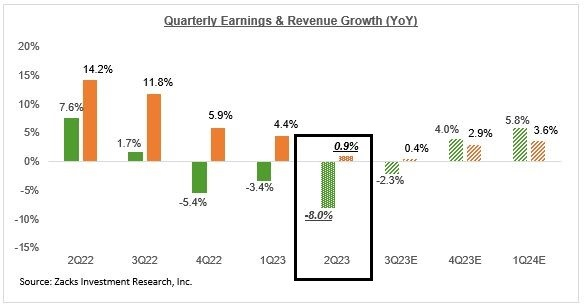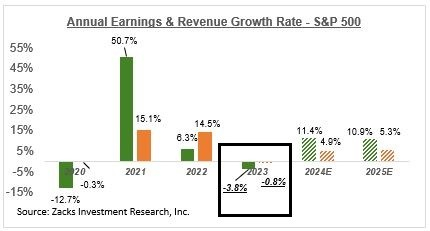Q2 Earnings Confirm Improving Growth Trends

Image Source: Pixabay
The weak sales numbers from Target (TGT - Free Report) – the retailer missed consensus estimates for the top-line and same-store sales – are most likely a function of company-specific execution and merchandising issues, not reflective of moderation in consumer spending.
Target has struggled in the post-Covid period, failing to foresee shifts in consumer spending away from discretionary categories like apparel, home furnishings, and electronics, resulting in unsold inventory that then needed to be cleared through markdowns.
Target’s Q2 margins were better, and management indicated satisfaction with inventory levels. But investors can’t be faulted for being skeptical of such views, as continuation of Q2’s weak sales and traffic trends in the current and coming quarters will mean the inventory overhang coming back all over again.
Unlike Walmart (WMT - Free Report), which hasn’t reported results yet but has a much bigger groceries business, Target has all along been seen as more of a play on discretionary merchandise. At the same time, consumer spending on discretionary items of the type that Target specializes in has undoubtedly moderated as demand shifted towards leisure, travel, and related activities. But Target appears to have lost out more than other retailers that sell comparable merchandise, with TJX Companies (TJX - Free Report) as a good example of one such retailer.
Consumer spending will eventually slow down in response to Fed tightening. However, we didn’t see much evidence of that in the Q1 earnings reports, neither from Walmart and Target nor from other consumer-centric companies.
These big-box retail leaders missed due to weak execution and failure to have the right merchandise in stores. Consumers didn’t buy the patio furniture at Walmart or appliances at Target, but they did plenty of shopping at Home Depot (HD - Free Report).
The challenge for retailers like Target, Walmart, TJX, and others is not only to have the correct merchandise but also to deal with higher expenses related to freight, payroll, and other items.
We have provided the updated Q2 earnings season scorecard for the Zacks Retail sector in the detailed report.
Beyond the Retail sector, the 2023 Q2 reporting cycle has come to an end for 10 of the 16 Zacks sectors, with results from almost 93% of the S&P 500 index companies already out.
The blended growth for the quarter is on track for an earnings decline of -8.0% from the same period last year on +0.9% higher revenues. This would follow the -3.4% decline in index earnings in the preceding period (2023 Q1) and the -5.4% decline in the last quarter of 2022.
In other words, 2023 Q2 is expected to be the third consecutive quarter of declining S&P 500 earnings. The expectation currently is for another earnings decline in Q3 of -2.3%, after which growth turns positive in Q4 and continues in 2024. In fact, Q3 earnings would be positive had it not been for the Energy sector drag.

Image Source: Zacks Investment Research
As you can see from these quarterly earnings-growth expectations, the long-feared recession doesn’t show up in this near-term earnings outlook. A big-picture view of corporate profitability on a long-term basis doesn’t leave much room for a recession either, as you can see in the chart below.

Image Source: Zacks Investment Research
These growth expectations reflect current bottom-up consensus earnings estimates for the individual S&P 500 companies that, in turn, are based on the estimates from individual sell-side analysts that cover those companies.
Regular readers of our earnings commentary know that we have flagged a notable stabilization in the estimate revisions trend since the start of 2023 Q2, reversing the persistently negative trend that had been in place for almost a year prior.
Earnings estimates in the aggregate for the S&P 500 index have come down only a touch since the start of April, with a number of key sectors starting to see modest positive estimate revisions. These sectors include Construction, Industrial Products, Autos, Tech, Medical, and Retail. These trends have been confirmed and strengthened by the Q2 earnings results and management’s guidance and commentary for the current and coming quarters.
More By This Author:
Retail Earnings Looming: What To Expect
Tech Sector's Earnings Outlook Reflects Improvement
Technology Sector Market Gains Are Driven By Fundamentals
Disclosure: Zacks.com contains statements and statistics that have been obtained from sources believed to be reliable but are not guaranteed as to accuracy or completeness. References to any specific ...
more


